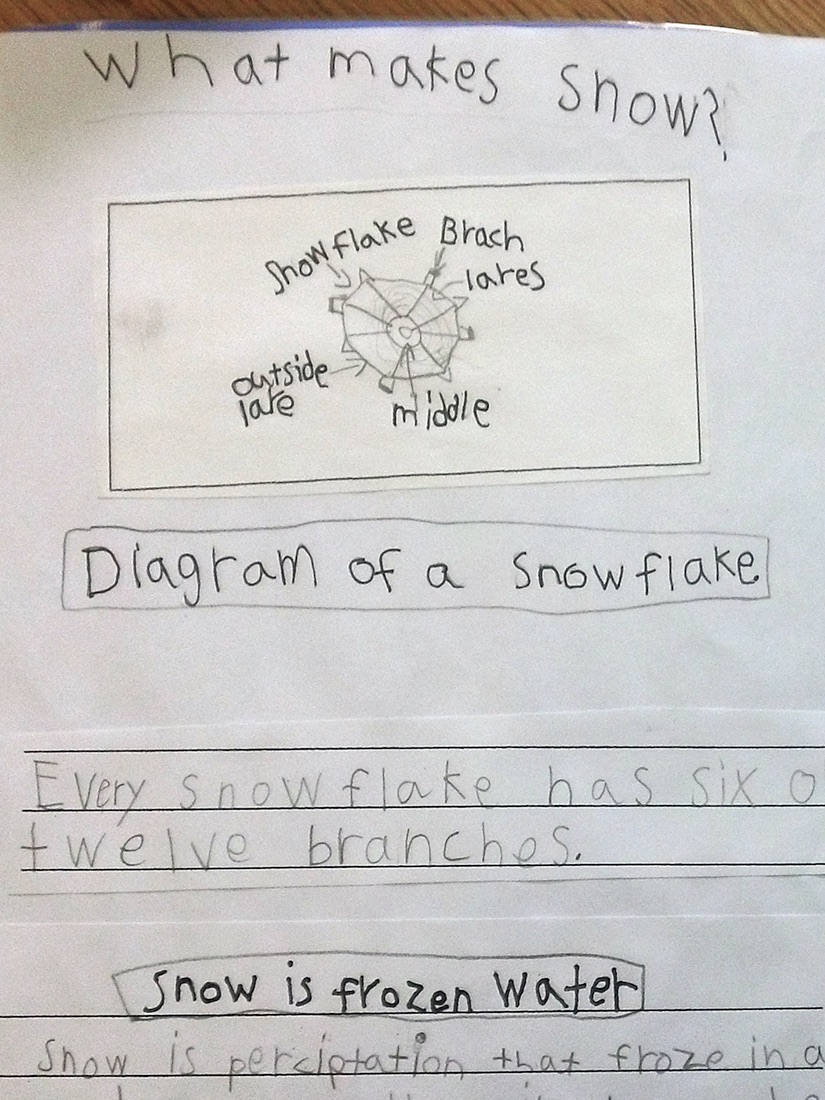Chapter 7: Nonfiction Is Not Just A Fancy Name For Fiction Reading And Writing Nonfiction In A Second-Grade Classroom
Nonfiction Is Not Just A Name For Fiction Reading And Writing Nonfiction In A Second-Grade Classroom

by Sara Kersten
It is reading time, and students sit in pairs, huddled around groups of books. Some sit at their tables, others lay on their stomachs on the floor with feet in the air, and some squish together in the red chair in the corner. Two girls get up and walk to one of the many bookshelves stationed around the room and whisper back and forth about which book they are going to read next. Another boy looks up at a large piece of chart paper taped to the blackboard and moves his lips as he reads the expectations of being an active reader. The teacher wanders around, frequently bending over the students, asking them about the books they are reading, at times leading them to the book cart and finding a book they may enjoy. There is a general buzz of productivity and excitement around the room. Niki comes up to me, smiles, and shyly says, “I’m having so much fun.”
What teaching decisions informed the work of Mrs. Kona and Sara?
- We read nonfiction books aloud every day.
- We paired fiction and nonfiction books together to help them inform each other.
- We explicitly taught students about the characteristics of the genre.
- We engaged students in conversation about the books we were all reading.
- Using the science content we involved students in a collaborative writing project.
The students in this second-grade classroom are being pulled into books about tornadoes, rainstorms, blizzards, and sunshine. The books Niki is having so much fun with are nonfiction books. While at one time the teacher, Mrs. Kona, had thought of nonfiction as boring and too difficult for primary children to read or have read to them, and as aesthetically bland and only useful for content area study, she now incorporates nonfiction books and content area study throughout her reading and writing instruction. Students in this classroom enjoy reading and hearing nonfiction as they explore and make personal connections with the books.
This chapter recounts the journey Mrs. Kona and I (as participant researcher in her classroom) took as we incorporated nonfiction picturebooks into her classroom. Based on our many years of teaching experience and our love of children’s literature we worked together to create a six-week unit combining the second-grade science study of weather and atmosphere with the English Language Arts Common Core Standards on nonfiction. This unit of study incorporated fiction books with weather related concepts, nonfiction picturebooks related to the content, science experiments, and a daily weather log. The unit ended up taking much longer, however, as we discovered that integrating nonfiction books into classroom instruction involved much more than simply putting books into students’ hands. As we observed students at work, we found ourselves re-planning lessons and choosing different books; evaluating what was working and what wasn’t; and planning where to go next. In the rest of this chapter, I describe these in detail.